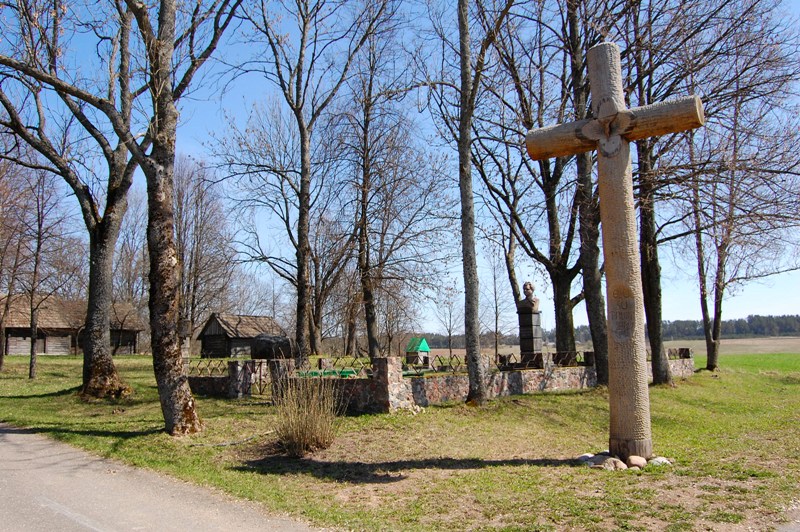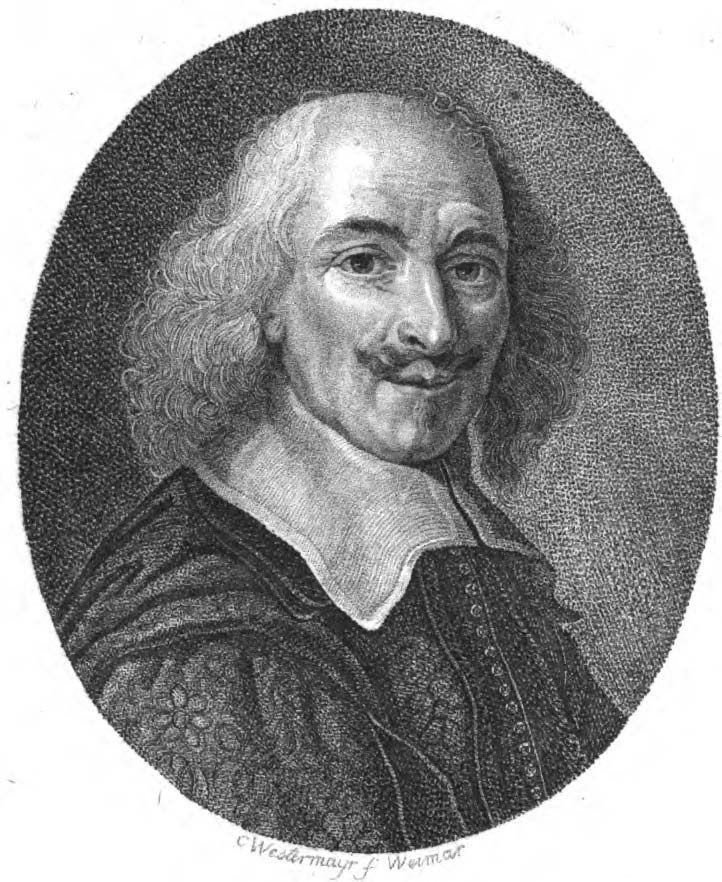|
Svėdasai
Svėdasai is a town in Utena County in the northern part of Lithuania, bearing a name from a nearby Lake Svėdasas. History The name according to Kazimieras Būga is of Selonians, Selonian origin. In July 1941, 245 to 386 people were murdered in a mass execution near Svėdasai most must have been Jews. Gallery References Towns in Lithuania Towns ...[...More Info...] [...Related Items...] OR: [Wikipedia] [Google] [Baidu] |
Juozas Tumas-Vaižgantas
Juozas Tumas also known by the pen name Vaižgantas (20 September 1869 – 29 April 1933) was a Lithuanian Roman Catholic priest and an activist during the Lithuanian National Revival. He was a prolific writer, editor of nine periodicals, university professor, and member of numerous societies and organizations. His most notable works of fiction include the novel ''Pragiedruliai'' (Cloud Clearing) and the narrative ''Dėdės ir dėdienės'' (Uncles and Aunts) about the ordinary village folk. Born to a family of Lithuanian peasants, Tumas was educated at a gymnasium in Daugavpils (present-day Latvia) and Kaunas Priest Seminary. He began contributing to the Lithuanian press, then banned by the Tsarist authorities, in 1889 or 1890. He was ordained as a priest in 1893 and posted to Mitau (present-day Jelgava, Latvia). In 1895, he was reassigned to Mosėdis in northwestern Lithuania. There he organized the publication of '' Tėvynės sargas'' and the book smuggling into Lithuania. Hi ... [...More Info...] [...Related Items...] OR: [Wikipedia] [Google] [Baidu] |
Anykščiai District Municipality
Anykščiai District Municipality is one of 60 municipalities in Lithuania. Structure District structure: * 3 cities – Anykščiai, Kavarskas and Troškūnai; * 8 towns – Andrioniškis, Debeikiai, Kurkliai, Skiemonys, Surdegis, Svėdasai, Traupis and Viešintos; * 758 villages. Biggest population (2001): *Anykščiai – 11958 * Svėdasai – 1002 *Kavarskas – 809 *Naujieji Elmininkai – 696 *Troškūnai – 525 *Kurkliai – 474 *Ažuožeriai – 452 * Debeikiai – 452 *Aknystos – 441 *Raguvėlė Raguvėlė is a village in Anykščiai district municipality, in Utena County Utena County ( lt, Utenos Apskritis) is one of ten counties in Lithuania. It is the country's most sparsely populated county. The capital and the largest city in the ... – 398 Elderships Anykščiai District Municipality is divided into 10 elderships: References Municipalities of Utena County Municipalities of Lithuania {{UtenaCounty-geo-stub ... [...More Info...] [...Related Items...] OR: [Wikipedia] [Google] [Baidu] |
Towns In Lithuania
Towns in Lithuania ( lt, miestelis) retain their historical distinctiveness even though for statistical purposes they are counted together with villages. At the time of the census in 2001, there were 103 cities, 244 towns, and some 21,000 villages in Lithuania. Since then three cities (Juodupė, Kulautuva, and Tyruliai) and two villages (Salakas and Jūrė) became towns. Therefore, during the 2011 census, there were 249 towns in Lithuania. According to Lithuanian law, a town is a compactly-built settlement with a population of 500–3,000 and at least half of the population works in economic sectors other than agriculture. [...More Info...] [...Related Items...] OR: [Wikipedia] [Google] [Baidu] |
Countries Of The World
The following is a list providing an overview of sovereign states around the world with information on their status and recognition of their sovereignty. The 206 listed states can be divided into three categories based on membership within the United Nations System: 193 member states of the United Nations, UN member states, 2 United Nations General Assembly observers#Present non-member observers, UN General Assembly non-member observer states, and 11 other states. The ''sovereignty dispute'' column indicates states having undisputed sovereignty (188 states, of which there are 187 UN member states and 1 UN General Assembly non-member observer state), states having disputed sovereignty (16 states, of which there are 6 UN member states, 1 UN General Assembly non-member observer state, and 9 de facto states), and states having a political status of the Cook Islands and Niue, special political status (2 states, both in associated state, free association with New Zealand). Compi ... [...More Info...] [...Related Items...] OR: [Wikipedia] [Google] [Baidu] |
Lake Svėdasas
A lake is an area filled with water, localized in a basin, surrounded by land, and distinct from any river or other outlet that serves to feed or drain the lake. Lakes lie on land and are not part of the ocean, although, like the much larger oceans, they do form part of the Earth's water cycle. Lakes are distinct from lagoons, which are generally coastal parts of the ocean. Lakes are typically larger and deeper than ponds, which also lie on land, though there are no official or scientific definitions. Lakes can be contrasted with rivers or streams, which usually flow in a channel on land. Most lakes are fed and drained by rivers and streams. Natural lakes are generally found in mountainous areas, rift zones, and areas with ongoing glaciation. Other lakes are found in endorheic basins or along the courses of mature rivers, where a river channel has widened into a basin. Some parts of the world have many lakes formed by the chaotic drainage patterns left over from the ... [...More Info...] [...Related Items...] OR: [Wikipedia] [Google] [Baidu] |
Towns In Utena County
A town is a human settlement. Towns are generally larger than villages and smaller than cities, though the criteria to distinguish between them vary considerably in different parts of the world. Origin and use The word "town" shares an origin with the German word , the Dutch word , and the Old Norse . The original Proto-Germanic word, *''tūnan'', is thought to be an early borrowing from Proto-Celtic *''dūnom'' (cf. Old Irish , Welsh ). The original sense of the word in both Germanic and Celtic was that of a fortress or an enclosure. Cognates of ''town'' in many modern Germanic languages designate a fence or a hedge. In English and Dutch, the meaning of the word took on the sense of the space which these fences enclosed, and through which a track must run. In England, a town was a small community that could not afford or was not allowed to build walls or other larger fortifications, and built a palisade or stockade instead. In the Netherlands, this space was a garden, mo ... [...More Info...] [...Related Items...] OR: [Wikipedia] [Google] [Baidu] |
Nicolas Sanson
Nicolas Sanson (20 December 1600 – 7 July 1667) was a French cartographer who served under two kings in matters of geography. He has been called the "father of French cartography." Life and work He was born of an old Picard family of Scottish descent, at Abbeville, on 20 (or 31) December 1600, and was educated by the Jesuits at Amiens. In 1627 he attracted the attention of Richelieu by a map of Gaul which he had constructed (or at least begun) while only eighteen. Sanson was royal geographer. He gave lessons in geography both to Louis XIII and to Louis XIV; and when Louis XIII, it is said, came to Abbeville, he preferred to be the guest of Sanson (then employed on the fortifications), instead of occupying the lodgings provided by the town. At the conclusion of this visit the king made Sanson a councillor of state. Active from 1627, Sanson issued his first map of importance, the "Postes de France", which was published by Melchior Tavernier in 1632. After publishing sever ... [...More Info...] [...Related Items...] OR: [Wikipedia] [Google] [Baidu] |
Selonians
The Selonians ( lv, sēļi; lt, sėliai, from liv, sälli – "highlanders") were a tribe of Baltic peoples. They lived until the 15th century in Selonia, located in southeastern Latvia and northeastern Lithuania. They eventually merged with neighbouring tribes, contributing to the ethnogenesis of modern Latvians and Lithuanians. They spoke the Eastern Baltic Selonian language. History Little is known about the Selonians. There is little archaeological evidence and in historic sources the region is often described as a "scarcely populated land". In written sources they are mentioned only few times. Archeological data can trace the Selonians back to the beginning of 1st millennium AD when they lived on both sides of the Daugava River. But since the 6th and 7th centuries their settlements can be traced only on the left bank of the river. Selonian culture had a very strong Latgalian influence. Selonian and Latgalian burial traditions show little difference. Some scholars spec ... [...More Info...] [...Related Items...] OR: [Wikipedia] [Google] [Baidu] |
Kazimieras Būga
Kazimieras Būga (; November 6, 1879 – December 2, 1924) was a Lithuanian linguist and philologist. He was a professor of linguistics, who mainly worked on the Lithuanian language. He was born at Pažiegė, near Dusetos, then part of the Russian Empire. Appointed as personal secretary to Lithuanian linguist Kazimieras Jaunius he showed great interest in the subject, and during the period 1905-12 studied at Saint Petersburg State University. After that, he continued his work on Indo-European language under the supervision of Jan Niecisław Baudouin de Courtenay. He later moved to Köningsberg to continue his studies under the direction of Adalbert Bezzenberger. In 1914 he received a master's degree in linguistics. His research on Lithuanian personal names led him into the study of place-names. From these he was able to determine that the homeland of the Lithuanians and other Baltic peoples up to the 6th to 9th centuries CE had been just north of Ukraine in the area around the ... [...More Info...] [...Related Items...] OR: [Wikipedia] [Google] [Baidu] |
Town
A town is a human settlement. Towns are generally larger than villages and smaller than cities, though the criteria to distinguish between them vary considerably in different parts of the world. Origin and use The word "town" shares an origin with the German word , the Dutch word , and the Old Norse . The original Proto-Germanic word, *''tūnan'', is thought to be an early borrowing from Proto-Celtic *''dūnom'' (cf. Old Irish , Welsh ). The original sense of the word in both Germanic and Celtic was that of a fortress or an enclosure. Cognates of ''town'' in many modern Germanic languages designate a fence or a hedge. In English and Dutch, the meaning of the word took on the sense of the space which these fences enclosed, and through which a track must run. In England, a town was a small community that could not afford or was not allowed to build walls or other larger fortifications, and built a palisade or stockade instead. In the Netherlands, this space was a garden, mor ... [...More Info...] [...Related Items...] OR: [Wikipedia] [Google] [Baidu] |




.jpg)
